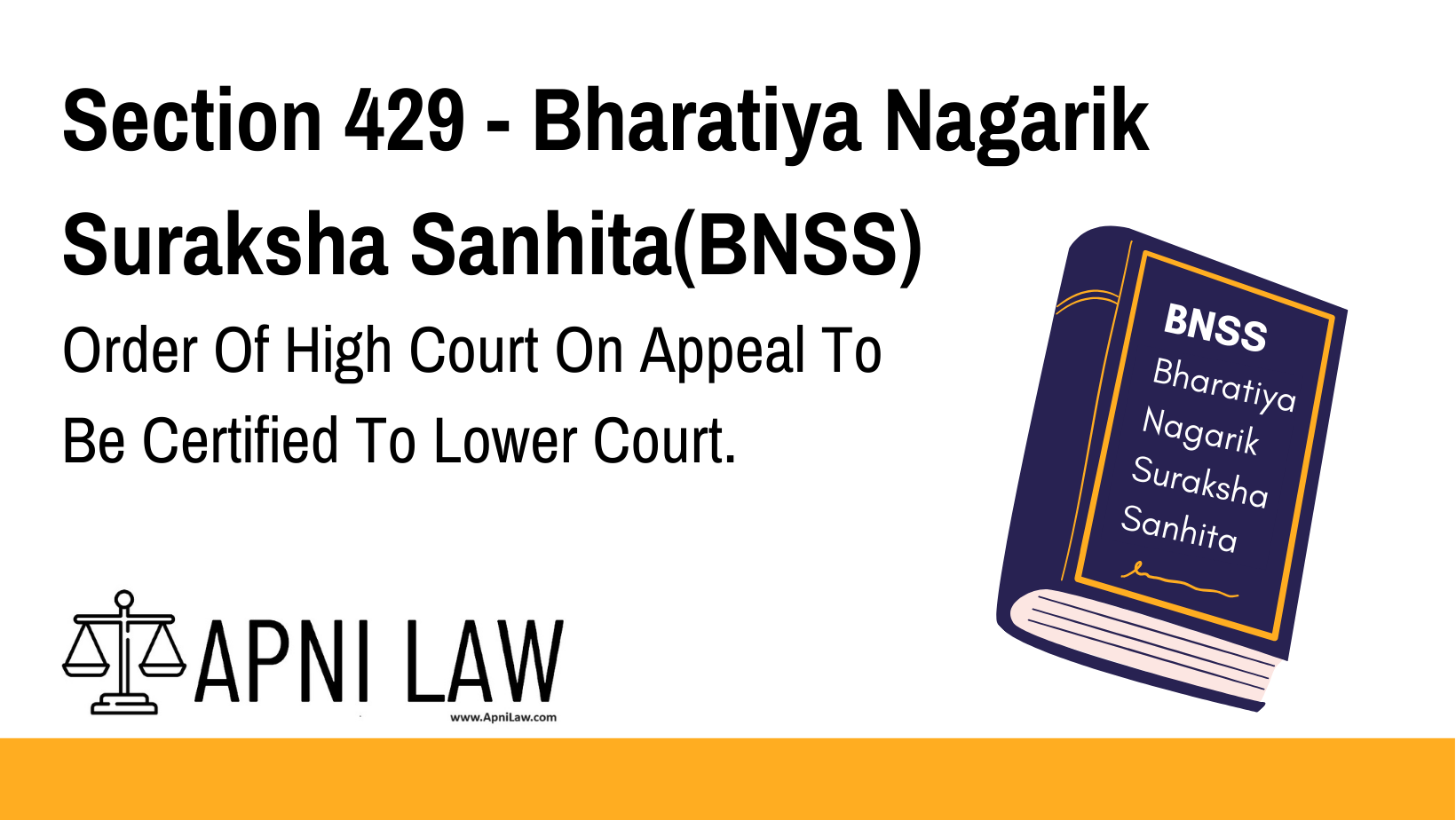Code: Section 429 BNSS
(1) Whenever a case is decided on appeal by the High Court under this Chapter, it shall certify its judgment or order to the Court by which the finding, sentence, or order appealed against was recorded or passed.
If such Court is that of a Judicial Magistrate other than the Chief Judicial Magistrate, the High Court’s judgment or order shall be sent through the Chief Judicial Magistrate.
If such Court is that of an Executive Magistrate, the High Court’s judgment or order shall be sent through the District Magistrate.
(2) The Court to which the High Court certifies its judgment or order shall thereupon make such orders as are conformable to the judgment or order of the High Court; and if necessary, the record shall be amended in accordance therewith.
Explanation of Section 429 BNSS
Section 429 of the Bharatiya Nagarik Suraksha Sanhita, 2023 (BNSS) outlines the process for transmitting appellate judgments from the High Court to lower courts. This ensures that appellate decisions are properly implemented by subordinate courts.
Key Provisions:
- Certification of Judgment:
- The High Court must certify its judgment or order to the lower court from which the case originated.
- Routing of Judgment:
- If the case was initially handled by a Judicial Magistrate (except the Chief Judicial Magistrate), the judgment is routed through the Chief Judicial Magistrate.
- If it was handled by an Executive Magistrate, the judgment is sent through the District Magistrate.
- Implementation of Orders:
- The lower court is obligated to issue orders conforming to the High Court’s judgment.
- Necessary changes must be made in official records accordingly.
Illustration
Example 1: Appeal Against Conviction
A person convicted by a Judicial Magistrate First Class appeals to the High Court. The High Court reduces the sentence.
- The High Court sends its judgment to the Chief Judicial Magistrate, who then ensures the lower court updates the sentence in official records.
Example 2: Executive Magistrate’s Case
A district-level case is decided by an Executive Magistrate, but an appeal leads to a modification by the High Court.
- The judgment is routed through the District Magistrate, ensuring proper compliance at the lower level.
Common Questions and Answers on Section 429 BNSS
1. Why is the High Court’s judgment sent through an intermediary?
To ensure a structured flow of appellate decisions and maintain judicial hierarchy.
2. What happens if the lower court does not comply with the High Court’s order?
Non-compliance can lead to contempt proceedings or further legal actions.
3. Can a lower court modify the High Court’s order before implementing it?
No, the lower court must strictly comply with the High Court’s order.
4. Is there a time limit for implementing the High Court’s decision?
While not explicitly mentioned, compliance must be immediate unless otherwise stated.
5. What if there is a clerical mistake in the High Court’s order?
Corrections can be sought through an application for rectification under relevant procedural laws.
Conclusion
Section 429 BNSS ensures that appellate judgments from the High Court are properly transmitted and implemented by lower courts. This provision maintains consistency and ensures that appellate decisions have the intended legal effect.
For expert legal insights, visit ApniLaw today! 🚀








